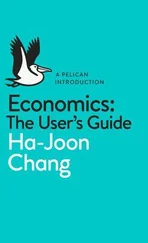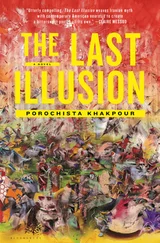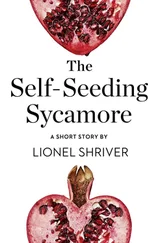Bruce Hood - The Self Illusion
Здесь есть возможность читать онлайн «Bruce Hood - The Self Illusion» весь текст электронной книги совершенно бесплатно (целиком полную версию без сокращений). В некоторых случаях можно слушать аудио, скачать через торрент в формате fb2 и присутствует краткое содержание. ISBN: , Издательство: Constable & Robinson, Жанр: Старинная литература, на английском языке. Описание произведения, (предисловие) а так же отзывы посетителей доступны на портале библиотеки ЛибКат.
- Название:The Self Illusion
- Автор:
- Издательство:Constable & Robinson
- Жанр:
- Год:неизвестен
- ISBN:9781780331379
- Рейтинг книги:5 / 5. Голосов: 1
-
Избранное:Добавить в избранное
- Отзывы:
-
Ваша оценка:
- 100
- 1
- 2
- 3
- 4
- 5
The Self Illusion: краткое содержание, описание и аннотация
Предлагаем к чтению аннотацию, описание, краткое содержание или предисловие (зависит от того, что написал сам автор книги «The Self Illusion»). Если вы не нашли необходимую информацию о книге — напишите в комментариях, мы постараемся отыскать её.
The Self Illusion — читать онлайн бесплатно полную книгу (весь текст) целиком
Ниже представлен текст книги, разбитый по страницам. Система сохранения места последней прочитанной страницы, позволяет с удобством читать онлайн бесплатно книгу «The Self Illusion», без необходимости каждый раз заново искать на чём Вы остановились. Поставьте закладку, и сможете в любой момент перейти на страницу, на которой закончили чтение.
Интервал:
Закладка:
Windows of opportunity exist in language and, as we shall see, even extend into other human qualities. But before we look into this, we should exercise against caution in over-interpreting the research on brain plasticity and critical periods described so far. This is because the discovery of critical periods in many animals led to some extreme beliefs and practices about human plasticity, especially when it came to how we should raise our children and what was the best parental practice. During the 1990s, there was a general panic that we were raising children in impoverished environments. The fear was that if we did not expose our children to a stimulating early environment, especially during the first three years, they would end up brain damaged. Suddenly, there was a public appetite for infant brain training and every parent and grandparent felt compelled to buy brain-enhancing devices from jazzy mobiles to hang over the crib, videos and DVDs to stimulate the brain, tapes of Mozart to play to pregnant mothers 30and every other kooky notion that was ‘proven by research’ to improve your child’s chances of getting into one of the Ivy League or Oxbridge universities. The marketers even had the audacity to name their various products Baby Einstein and Baby Bach . John Bruer, then director of the James S. McDonnell Foundation that supported much of the neuroscience research behind the original animal work, even wrote a book, The Myth of the First Three Years , to try to counter this hysteria based on the over-extrapolation of animal deprivation studies to human development. 31
The truth is that deprivation has to be quite severe before permanent loss occurs because most daily environments are sufficiently complex to provide enough input for hungry young brains to process. Parents should not be conned into thinking that they can enhance a process that has taken millions of years to evolve. In fact, some products such as baby training DVDs to enhance language have been found actually to impair language development because parents were relying on the television rather than the richness of normal social interaction. 32
Concerned educators and shrewd companies have either naively or deliberately misinterpreted the extent to which brain plasticity operates during sensitive periods. More importantly, there is little evidence that we can improve upon Mother Nature to supersize the early learning environment for a better intellectual outcome. But such messages fall on deaf ears. When it comes to doing what’s best for their kids, most parents err on the side of caution and so I suspect that the baby-brain boosting industry will always flourish. If only they would understand that the human brain has not evolved to absorb information from technology, but rather to absorb information from other people – much more complicated and yet so familiar.
The Gossiping Brain
At around 1.5 kg, the human brain is thought to be around five to seven times larger than expected for a mammal of our body size, and it has an especially enlarged cerebral cortex. 33If our brain had the same architecture as a rodent, it would weigh just 145 g and hold a meagre twelve billion neurons. 34Why do humans have such big, complicated brains in the first place? After all, they are very expensive to run, and although they only account for 2 per cent of typical body weight, they use up 20 per cent of metabolic energy. 35It has been estimated that a chess grandmaster can burn up to 6,000 to 7,000 calories simply by thinking and moving small pieces of wood around a board. 36What could justify such a biologically expensive organ? An obvious answer is that we need big brains to reason. This is why we can play chess. After all, a big brain equals more intelligence. This may be true to some extent but evolutionary psychologist, Robin Dunbar, has been pushing a less obvious answer – one that has to do with being sociable. He makes the point that big brains are not simply useful for any problem such as chess, but rather seem to be specialized for dealing with problems that must arise out of large groups in which an individual needs to interact with others. 37
This is true for many species. For example, birds of species that flock together have comparatively larger brains than those that are more isolated. A change in brain size can even occur within the lifespan of an individual animal such as the locust. Locusts are normally solitary and avoid each other but become ‘gregarious’ when they enter the swarm phase of their life cycle. This swarm phase of the locust is triggered by the build up of locusts as their numbers multiply, threatening food supply, which is why they swarm to move en masse to a new location. As they rub against each other, this tactile stimulation sets off a trigger in their brain to start paying attention to each other. Amazingly, areas associated with learning and memory quickly enlarge by one third as they begin to swarm and become more tuned in to other locusts around them to become a devastating collective mass. 38
Larger brains facilitate social behaviour. The link between brain size and sociability is especially true for primates where the extent of the cortex predicts the social group size for the species even when you take body mass into consideration. For example, gorillas may be big primates but they are fairly solitary animals with small close-knit family units and so their cortex is comparatively smaller than that of chimpanzees, which are much more sociable and like to party. 39
If you are a member of a species that has evolved to coexist in groups, then you are faced with some challenging decisions about how to spread your genes. To make sure that you have enough resources for your self and any offspring, you need to get sneaky. This is particularly true of primates who engage in deception and coalition formation, otherwise known as Machiavellian intelligence, 40after the medieval Italian scholar who wrote the rulebook about how to govern through cunning and strategy. Primates in highly social groups try to outsmart and outflank fellow competitors for both the attention of potential mates and the distribution of resources. They need the mental machinery to keep track of others and second-guess their intentions. To do that, they need big brains with large areas of cortex to keep track of all the potential complex behaviours and information that large groups generate. For example, consider the number of interactions that exist between a dozen friends. Not only do you have to keep track of every relationship between each pairing, but you also have to work out all the potential combinations between subgroups within the group.
Using analysis based on all the major primate groups, Dunbar has shown that the cortex to group-size ratio can be used to predict the optimum group size for humans. According to Dunbar’s calculations, humans should coexist best in groups of up to 150. Any larger and the demands on social skills exceed our best capacity. It is a radical claim, and still very contentious, but there does appear to be evidence to support the hypothesis, especially when one considers pre-industrial societies. Over the course of human civilization, technology and industrialization have changed the way that we form groups. But keep in mind that the post-agricultural age began around 10,000 years ago and, with it, human behaviour changed as our species shifted from roving hunter-gathers to sedentary subsistence farmers. When you consider only those remaining hunter-gather societies that did not adapt to agriculture, the analysis reveals that Dunbar’s ratio exists among traditional societies. Even early religious settlements in the United States, such as the Hutterites, seem to have been most successful when their communities contained no more than 150 individuals. When a Hutterite community grows larger than 150, a new breakaway community is formed. Finally, analysis of modern companies reveals that large workforces operate and are managed best when employees form subdivisions of around the magic 150 workers. When Malcolm Gladwell was researching Dunbar’s ratio for his bestseller, The Tipping Point , he reported that Gore-Tex, the company that manufactures the high-tech material found in many sporting clothes, expanded its operations by forming subdivisions of 150 workers each time there was a need to open a new division. 41Dunbar’s number is an intriguing idea, especially as technology develops to change the way humans interact and keep track of each other. However, what worked for earlier societies may still be operating today in the modern, socially networked world.
Читать дальшеИнтервал:
Закладка:
Похожие книги на «The Self Illusion»
Представляем Вашему вниманию похожие книги на «The Self Illusion» списком для выбора. Мы отобрали схожую по названию и смыслу литературу в надежде предоставить читателям больше вариантов отыскать новые, интересные, ещё непрочитанные произведения.
Обсуждение, отзывы о книге «The Self Illusion» и просто собственные мнения читателей. Оставьте ваши комментарии, напишите, что Вы думаете о произведении, его смысле или главных героях. Укажите что конкретно понравилось, а что нет, и почему Вы так считаете.












